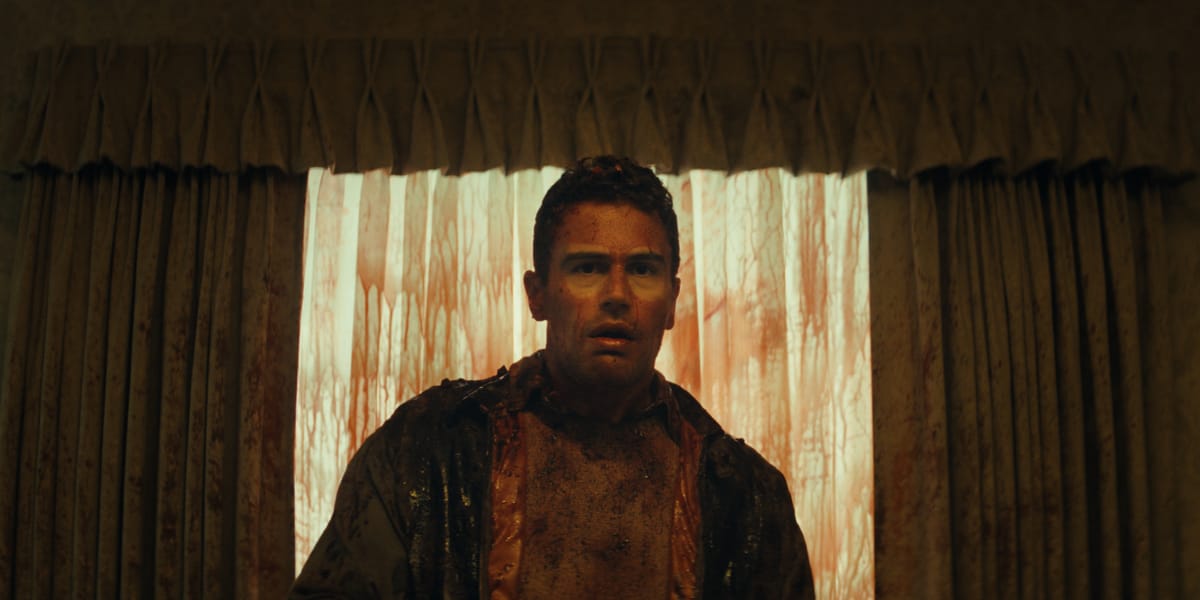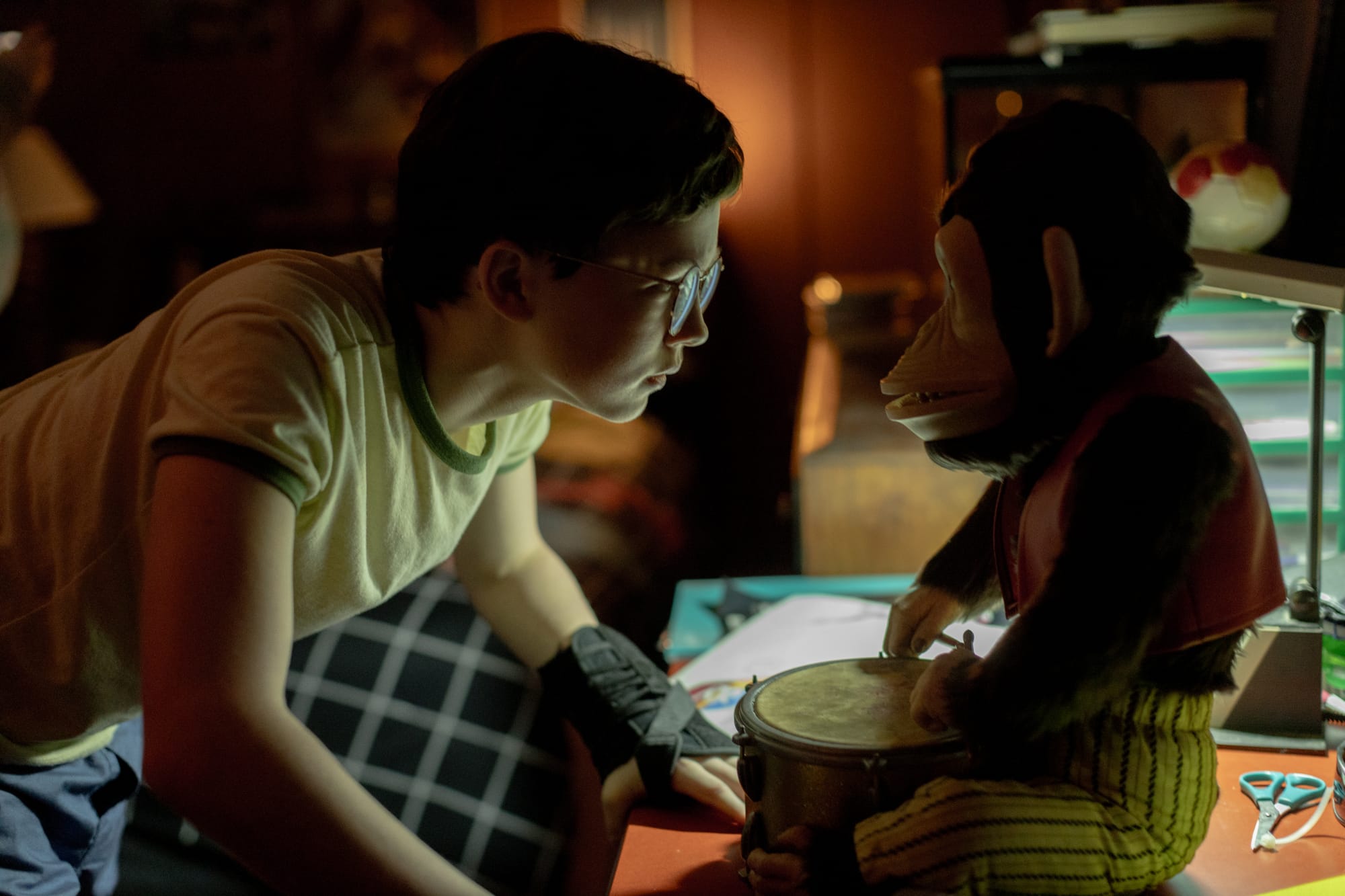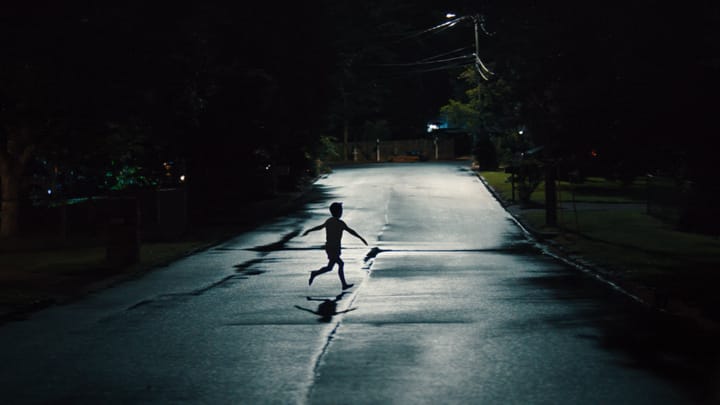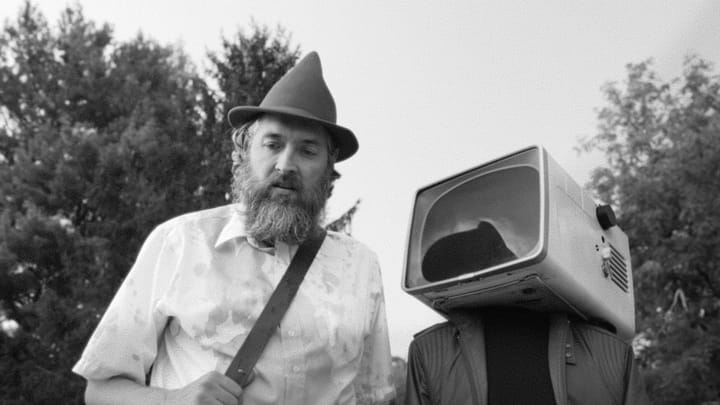The Monkey: Always Banging on the Same Drum

It is poetic, really, that Osgood Perkins' adaptation of the Stephen King short story, The Monkey (1980), matches the prop itself. In the short story, the wind-up toy monkey hits cymbals together. It turns out, due to Toy Story 3 (2010), a wind-up toy monkey that hit cymbals together was copyrighted; therefore, the Perkins adaptation swaps in a drum. This allows the monkey to do a preparatory spinning of the drum stick – which is a great touch – and the beating percussive sound of the drum is appropriately ominous for the death knells the toy is supposed to produce (when it uses its instrument, people die). The really inspired part, though, is that now all the monkey does is hammer out the same beat over and over again. It does one thing and it keeps doing it. It is apt because, truly, that is all the movie does. It has one idea, one note, one appeal and it just beats it out on repeat far beyond the point of diminishing returns.
This adaptation comes off the back of recent success for the filmmaker. The utterly brilliant Longlegs (2024) has transitioned Perkins from acclaimed, cult horror director into a much larger name. There's a lot of carryover between his earlier work and this new film, with a sharp style that again evidences real skill behind the camera. In the most broad sense, The Monkey is a very well directed film. It is attractive, stylish and well performed. For what it actually is, though, the direction is mismatched. This is Perkins' first foray into straight horror-comedy. There's certainly a dark irony and gallows humour that runs through much of his previous films but The Monkey is as interested in being comedy as it is in being horror. It is supposed to be funny and the push towards this really takes the filmmaker out of their comfort zone. The resultant film is a tonal jumble, with a weak script – on a dialogue level – that listlessly wanders into scenes of straight up comedic dialogue that just fall flat.
The grim irony does evoke humour, as it has done before. This embittered tone matches the directorial style so well. The lighting, compositions, design and editing rhythm all come together to create a style that feels distanced, observational and effectively clinical. This matter of fact approach is purposefully incongruent with the horror realities of Perkins' films. It is a deadpan sensibility, really, and it makes films like Longlegs darkly hilarious (to the right kind of viewer) without jeopardising the actual horror and intensity. The laugh becomes a response to the intensity or to the grimness of it all. The short story shares this approach, it's a tale told primarily in flash-back of the role a toy monkey plays in the life of a man and his family. The monkey is given a kind of voice in the story, having an imagined narration in the thoughts of the story's protagonist. These moments are now visually implied, and successfully so. Rather than the lead looking at the monkey and the expression conjuring up thoughts, we have shots where we look at the monkey and said visual evokes the same kind of paranoia in our minds. It just works, though the prop does lack the characterisation that the story relies on. What is most worth noting, though, is that the story isn't a comedy story. It is funny in a tragic irony way and actually is so in a way that links to Perkins' sensibilities. However, reading about a wind-up monkey that happens to make people die – for no reason but that – probably works better than putting it on screen. The added layer of comedy in the film seems like an attempt to reconcile the inherent silliness of the premise on screen.

There is certainly scope for comedic horror seeing as the film is pretty much a sequence of unlikely deaths. There's something of Final Destination to it, certainly, but it still wants to be prestige and glossy. There are laughs to be had at the over the top kills but the kills are more presented as punchlines than as anything more. This is where hitting the same beat comes back, we just cut to a grizzly (and usually quick) death a lot and the reliance on shock starts to disappoint quite quickly. The rhythm mostly remains the same, returning to the deadpan sensibility of Perkins. It's a comedy that works as a balance to intensity but it doesn't work as the main comedic device. I found myself yearning for the approach of Stuart Gordon, early Peter Jackson or Brian Yuzna. The legendary b-movies of these directors know how to use the expression of violence for comedy. Extended scenes of creative, hyperbolic gore push to the point of comedy. Sam Raimi's The Evil Dead (1981) also fits, with that first film being sheer horror but becoming an effective horror-comedy due to how extreme it is. The gore falls into the splat-stick category, coined by Peter Jackson, where it's a kind of custard pies physical comedy – very circus-y – but blood and viscera are the new props. The Monkey is very extreme in description but the clinical, sharp approach cuts through this. Perkins isn't a body horror guy, and he isn't a b-movie guy. There's a hyperbolic, trashy edge that the film not only lacks, it requires.
Perhaps it's a symptom of the main issue, though, which is narrative. This adaptation is a very liberal one. Character names are kept but relationships and events are hugely changed. The structure is also shifted. The short story has a framing device of the present that we keep coming back to. The film starts with a scene in the present that allows us to flash-back to the past but then just takes a linear trajectory from that point, and doesn't explore the same relationship between past and present through structure. This is a mistake as that is where the meat of the short story lies. The substance is in this idea of repeating trauma and familial guilt. One could argue that the linear approach also shows the build of this but what becomes even clearer is that the short story's structure is there to cover up the lack of actual narrative. The story is the jumping back and forward, just going on and on stretches the narrative beyond its potential. There's a big difference between a story about a bad monkey that is a threat in the present, where flashbacks are used to enhance that, and a story of a bad monkey continuing to be bad through time. The feature film adaptation just feels far too loose and aimless, and this takes us back to banging on the same drum the whole way through. There isn't that much to the premise of 'cursed monkey toy that makes people die'. The toy needs to be unexplained, it needs to just be evil, and therefore the short story keeps things tight. The feature film just keeps going.
Sadly, the whole thing just doesn't work. It feels like a few approaches shoved together without a compelling narrative structure to really support anything. When we digress to quirky characters who are clearly comedic constructs, it feels flat and unsupported by the direction. When we focus on horror it feels repetitive and known, a dragged out experience where the deaths aren't indulged in enough to carry the film. A handsome film that can certainly entertain, and has some decent shocks, but an unwieldy and ultimately misguided one.





Comments ()